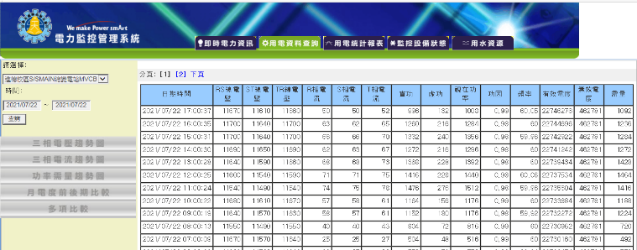SDG 7.2.5 Energy wastage identification
1. NCUE regularly convenes meetings of the campus-wide energy-saving group at the end of each year to review the effectiveness of that year’s energy-saving policies, and formulate measures for the following year. The meeting is presided over by the chancellor, with the respective buildings’ management units appointed as team members. In addition, the respective energy management unit monitors the increase in electricity consumption for each building during the past year and implements reward and punishment measures to ensure that all unit members practice electricity-saving habits. The results of past reviews indicate that air-conditioning is currently our largest source of energy consumption, followed by the lighting system.
2. We have installed an energy management system (EMS) (Figure 1) that monitors the hourly, daily, monthly, and annual electricity consumption of more than 33 buildings and related equipment on campus. The data are used to monitor the daily electricity consumption of the buildings, analyses NCUE’s electricity consumption habits, and even verify the results of our annual energy-saving measures.
|
|
|
Figure 1. An excerpt from the NCUE’s energy management and monitoring system |
3. The specific functions of the EMS are as follows:
(1)Measures the real-time voltage, current, power, demand, frequency, and other important parameters of each building.
(2)Generates reports to display the cumulative energy consumption of all buildings in the entire campus on an hourly, daily, and monthly basis.
(3)Please refer to Annex 7.2.5A for the related interfaces.

